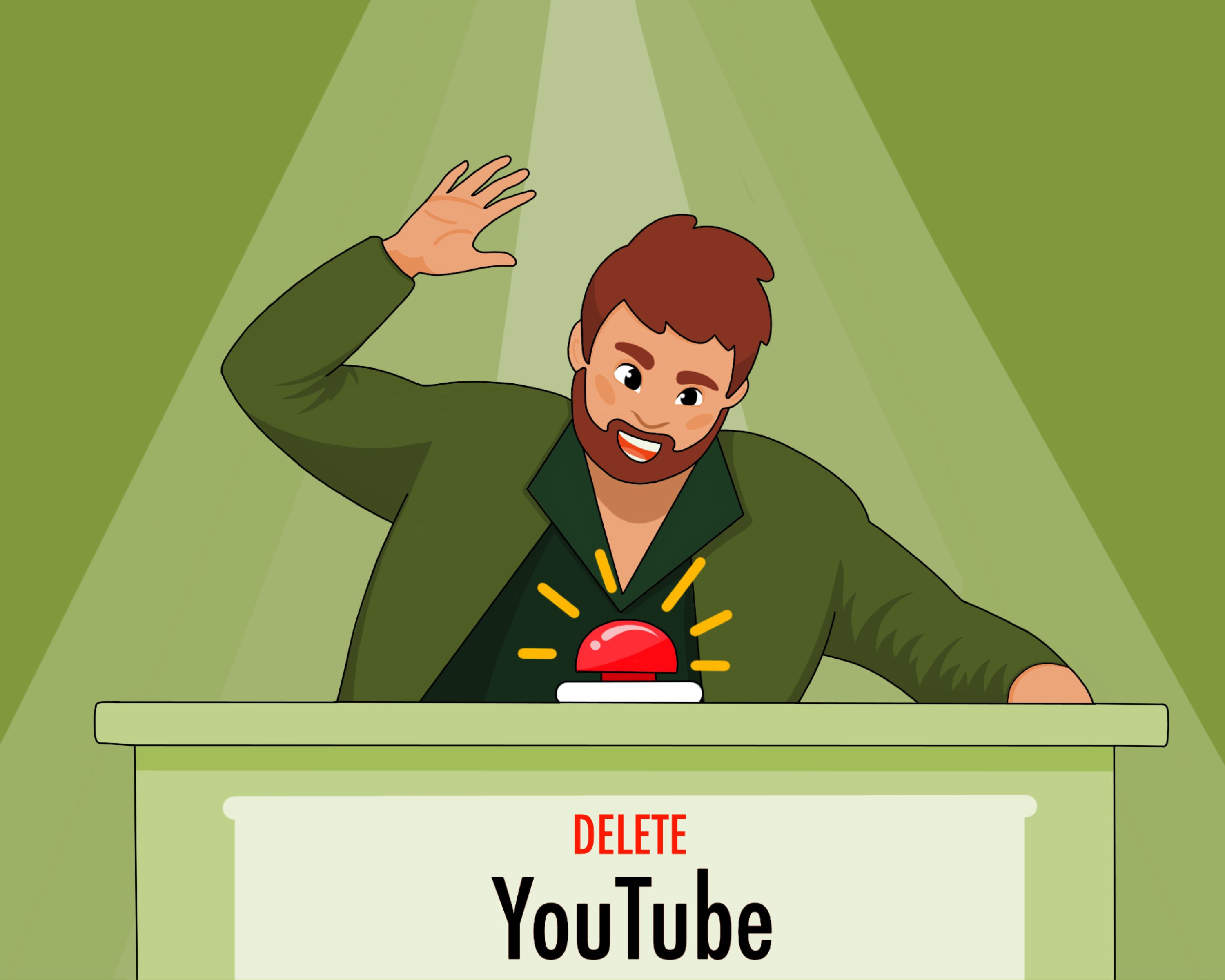How to Create a Video Intro That Can Bring You a Million Views

Most YouTube “pros” emphasize the importance of an amazing video introduction. It’s an aspect of video creation that works. The more attractive and interesting the first 5-7 seconds of the video are for the viewer, the higher the likelihood that they will stay on the channel and decide to watch other videos.You are probably wondering: how do I create this perfect video introduction? Well, there's a cool and effective formula. Let's delve into it!
Creating an interesting introduction is an integral part of a successful video. Hundreds of creators still use outdated, uninteresting phrases like, "Hello, welcome to my channel," which may only evoke irritation.
So what's the secret to a successful video introduction? It lies in a simple phrase: make interesting introductions. With the steps below you will be well on your way to crafting intros that will keep your viewers glued to their screens.
Step One: Set certain video expectations
At what stage does a viewer start forming expectations for your videos? News flash, it’s not during the search or at the start of pressing play. Expectations start when viewers first lay eyes on the video's thumbnail and title.
For instance, when searching for a video like "How to tie a tie," an image of what we expect from the video already forms in our minds. Some may focus on the timing, wanting a quick solution, while others may randomly click the first result, and some might scroll through the search feed looking for an attractive thumbnail, a specific word in the title, or a detailed guide.
Each video addresses a specific need for the viewer, and potential viewers formulate their expectations based solely on the thumbnail and title.
Now, what do titles and thumbnails have to do with video introductions? The fact is that no introduction matters if the viewer doesn't choose your video. So, discussing introductions without mentioning their direct connection to titles and thumbnails is impossible.
When we create a video, only we know how great, interesting, funny, and beautiful it is. Viewers, however, are unaware of the creator’s skills or the content's substance. This is a common issue among many content creators: thinking in terms of their feelings rather than the viewer's.
All your viewers see are the external elements of the video—what sets it apart from others on YouTube. Hence, to guide viewers to the introduction, learn to view your titles and thumbnails from your audience's perspective.
Thumbnails and titles create expectations among viewers. All that's left for the videos is to fulfill those expectations. You cannot generate any expectations for your videos without compelling titles and thumbnails.
Remember it once and for all: no click—no view.
Step Two: Justify expectations in the first 5 seconds.
Many YouTubers apply a two-step formula to the first five seconds of a video. The first sentence spoken in the video relates to the video title, and the first frame corresponds to its thumbnail. It's not an absolute rule but a formula that works for most creators. For a visual example, let's take Mr. Beast's popular video about Willy Wonka's chocolate factory. Remember the first step? Create anticipation. The video's thumbnail depicts Mr. Beast gesturing to visit Willy Wonka's chocolate factory, setting the expectation that we'll end up there during the video.
And within the first few seconds, Jimmy completely justifies our expectations: at the entrance to his factory, not only is he present, but so are other people. Therefore, it genuinely exists, and in the video, we find ourselves exactly where the thumbnail promised. The video's title includes the phrase "I Built Willy Wonka's Chocolate Factory," and by listening to the first sentence in the video, it becomes clear—there's no deception here: "I recreated Willy Wonka's chocolate factory."
The match between the initial frames of the video and the thumbnails doesn't necessarily have to be exact; it can also involve a match in color scheme or storyline between the thumbnail and the actions in the video. Another similar example can be seen in a video by another prominent blogger, Mark Rober. The thumbnail features several elements: lava, acid, and the content creator himself. The title clearly states that tests will be conducted here, and this is exactly what unfolds at the beginning of the video.
The storyline from the thumbnail and the theme in the title are entirely confirmed at the beginning of the video. They clearly state what will happen, demonstrate both lava and acid, and even start showing them in action, confirming that they melt everything. This doesn't mean that your introductions must match the thumbnail and title word for word and image for image; it means they should be narratively and qualitatively connected. In simpler terms, avoid clickbait, and you won't lose viewers right at the beginning.
Step Three: Engage viewers to watch the entire video.
There is no perfect formula for the length of an introduction; it depends on how interesting it is and how justified the chosen duration is. If we've already managed to meet our viewers' expectations, and they've stayed with us after the first few seconds, we can then try to adhere to certain criteria that determine further video watching.
- Create a “Curiosity Gap”
The "Curiosity Gap" is a technique that involves creating a need for potential viewers to learn more about what you are discussing in the video. Curiosity works as a tool in any content format. To activate this "gap," there are so-called "viewer hooks."
For instance, a hook could be demonstrating the reaction of a character to the results of some actions at the beginning of the video, without showing the actual outcome. This creates a "gap" in the viewer's mind with a logical question: what exactly happened?
Returning to Mr. Beast's video about the chocolate factory, at the beginning, they throw in this type of hook: one of these ten people will leave with this chocolate factory. As viewers, a subconscious question immediately arises: who will be the winner of the challenge? Who will get the entire factory? What will they have to do for it? Intriguing? Definitely!
- Provide context
In other words, provide clear and comprehensive information about the video's topic. It's not enough to throw in some intrigue—people need more information about the conditions, criteria, and what is happening. Otherwise, they might just skip to the end to see the winner and never return to watch the full video.
Continuing the analysis of Mr. Beast's video, he employs two techniques: showcasing the scale of the factory, demonstrating the potential of the location, making viewers want to watch the entire video to evaluate each element, and explicitly stating the participation conditions.
Ideally, your introductions should not just meet the expectations set by the thumbnail and title; they should exceed viewers' expectations. Some YouTubers use a special approach—they demonstrate how valuable it is to watch their video.
It's initially challenging to understand what this means, so let's turn to Mr. Beast once again.
Not only were we immediately struck by powerful, tear-inducing emotions, but they also demonstrate the scale of the event: numbers emphasized the quantity of participants in this initiative, and even a basic technique such as displaying the globe at that moment effectively served the purpose.
To employ these techniques, it's not necessary to create globally significant charity events or spend years building a project. You can simply share your personal story. The more effort the creator puts into the video, demonstrating to the audience, in terms of time or money, the more value they create in the minds of their viewers.
The people watching are just like you, and, of course, the fact that you're making an effort for them will have emotional significance.
Step Four: Test and analyze your ideas
Without analyzing your own actions, nothing will work. You'll have to analyze successes and failures to identify patterns between what works and what doesn't. Over time, you'll develop your own formula for successful intros and more.
To make it easier for you to start, let's go over options for analyzing your own content.
- Loss of concentration test
You can do it alone or with friends. The idea is to watch your own video and pause it exactly when your mind wanders for a moment. It's better to conduct this experiment with someone else and observe their reaction or ask them to share moments when they found the video boring. By noting these instances and analyzing why they occurred—whether it was a desire to pet a cat, check notifications on the phone, gaze out the window, and so on—you'll learn to make your videos more engaging and dynamic.
- Try different formats
It's not scary to experiment; what's frightening is getting stuck with what doesn't work just because you're afraid to let go of the familiar. Clinging to the known will only self-destruct, leaving you with no positive results. There's nowhere to find success if you don't attempt to go beyond your accustomed format.
- Use analytics
Yes, working with it can be challenging; it's not always straightforward. That's why we strive to create as many useful guides for you as possible. There are no perfect formulas on YouTube. There are effective ones or those that work in most cases, but if all channels and creators could fit into one criteria, there would be no individuality or creativity on the platform. That's why the most effective formula for success is the one you discover for yourself through experience. Dare to try. The key is to enjoy the result you achieve.




